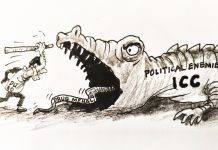
Power struggles involving competition or conflict for influence, control, or authority are inherent in any workplace environment. These struggles can manifest in various forms, such as interdepartmental rivalries, employee-manager conflicts, or even subtle office politics. They seem unavoidable in the workplace based on organizational psychology and studies. It is then crucial for one to understand this phenomenon as it enables one to anticipate, navigate, and mitigate its potentially detrimental effects.
Power struggles arise due to the innate human desire for influence and control over others. Workplace hierarchies, with power concentrated at the top, make this propensity more pronounced. Individuals, regardless of their position within the organizational structure, strive to assert their authority, gain recognition, and achieve personal and professional growth. This striving for power fuels the inevitability of power struggles, even in the most harmonious and well-intentioned workplaces.
In today’s competitive landscape, limited resources and opportunities further exacerbate power struggles. Whether it is a scarcity of promotion prospects, project funding, or other rewards, individuals become more inclined to engage in power struggles to secure those resources for themselves or their teams. This phenomenon intensifies competition and can lead to an adversarial climate within the workplace.
Workplaces are composed of individuals with various perspectives, experiences, and interests. These differences contribute to varying personal and professional goals, leading to diverse opinions and potentially conflicting interests. Power struggles often emerge when these perspectives clash, creating tensions and disagreements between employees or departments. The struggle for dominance in decision-making processes or the imposition of one’s values and viewpoints can be a primary driver of such conflicts.
Organizational culture and structural ambiguity can both fuel and perpetuate power struggles. Workplace cultures that reward competitiveness, individualism, or office politics may inadvertently encourage and amplify power struggles among employees. Moreover, organizational structures with unclear reporting lines or ill-defined roles can create confusion and ambiguity, making it easier for individuals to assert their power inappropriately or engage in disruptive behavior.
Effective communication within a workplace is essential to mitigate power struggles. Lack of proper communication channels, transparent decision-making processes, or conflicts of interest can contribute to misunderstandings, mistrust, and subsequently, power struggles. In an environment where communication is limited or clouded, individuals may resort to power plays as a means of asserting their interests or gaining control.
Leadership style plays a pivotal role in shaping power dynamics within the workplace. Leaders who adopt autocratic or coercive styles may inadvertently create an environment ripe for power struggles, as they concentrate power at the top and limit employee autonomy. Conversely, transformational leaders who emphasize collaboration and shared decision-making can help diffuse potential power struggles by empowering their employees and creating a culture of trust and respect.
Power struggles are an inherent part of any workplace due to human nature, organizational structures, scarce resources, diverse perspectives, cultural factors, communication issues, and leadership styles. What’s alarming is that power struggles can have pronounced effects on employee morale, productivity, and overall organizational performance. This calls for effective management, conflict resolution, fostering positive workplace relationships, and creating a harmonious and successful professional environment.



